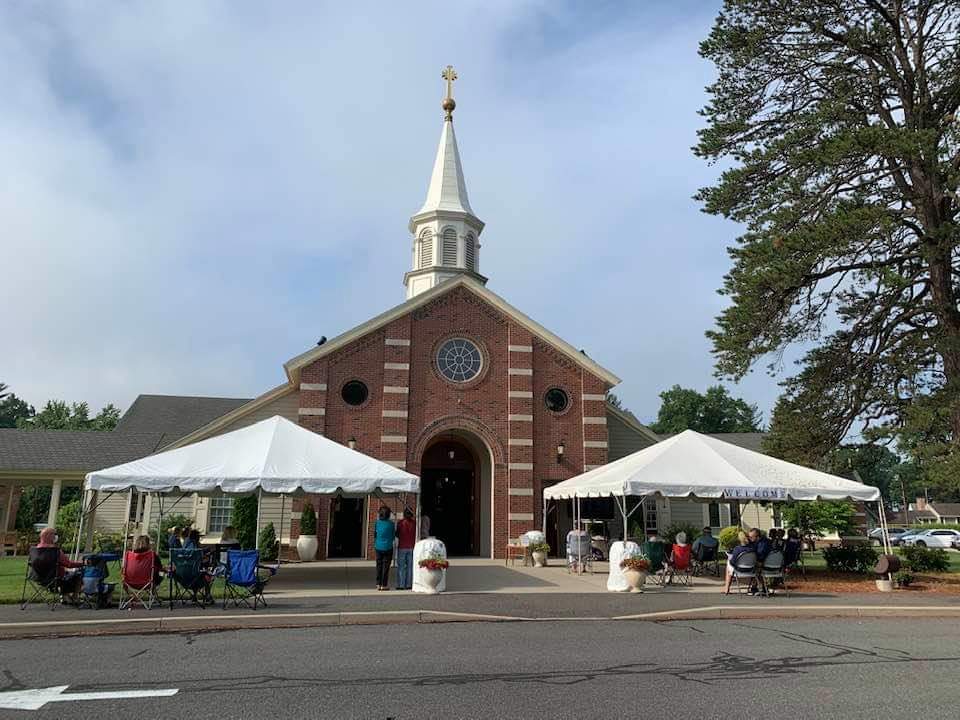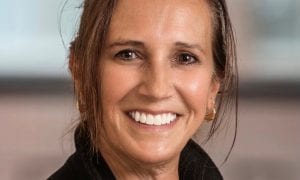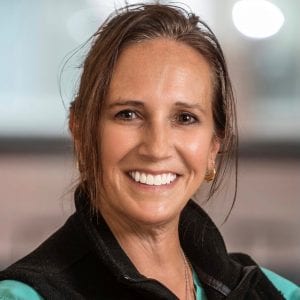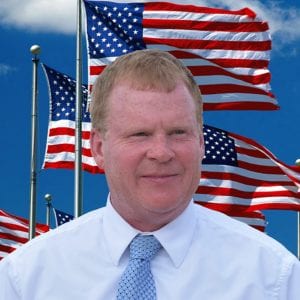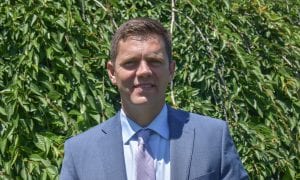Editor’s note: This is the first in a series of stories that are showcasing how our local religious leaders have adapted to the changes brought about with the coronavirus pandemic. For church leaders who would like to share their stories with readers, please email Westfield News Editor Hope Tremblay at [email protected].
WESTFIELD-In the early days of the coronavirus pandemic, priests in the city had to adapt quickly to the protocols instituted by religious and state governing bodies to keep their parishioners safe.
“In the first month of the pandemic, priests were prohibited from administering the sacrament of the Anointing of the Sick,” said the Rev. John Salatino of St. Mary’s Parish on Bartlett Street.
Salatino added that among the most challenging aspects of his job during the early months of the pandemic was having “no access or limited access” to hospitals and nursing homes.
“The most difficult things included not being able to make house calls and not being able to be with our parishioners when they needed us the most,” said Salatino.
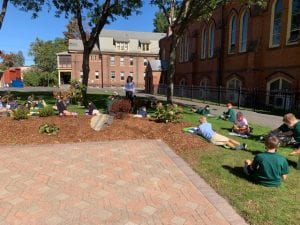
Both of St. Mary’s Parish schools have reopened following strict state and diocesan protocols. When the weather allows, teachers also conduct classes outside for students. (ST. MARY’S PARISH PHOTO)
The Rev. Rene Parent, M.S., of Holy Trinity Church on Elm Street, shared a similar sentiment.
“The most challenging aspects were not being able to minister to the sick and dying in the hospital and nursing homes and administer the Sacraments to them and not being able to offer consolation to their families,” said Parent.
The Rev. Daniel S. Pacholec of Our Lady of the Blessed Sacrament Church on Holyoke Road concurred.
“The hardest part of this whole experience is trying to keep the ‘flock’ together – spiritually and as a community,” said Pacholec. “People are struggling during the time of the pandemic, and many are turning to their faith.”
Both the Rev. William H. Wallis of St. Peter and St. Casimir Church on State Street and the Very Rev. Joseph Soltysiak of St. Joseph’s National Catholic Church on Main Street also agreed that challenges have been wide ranging. For Soltysiak in particular, a host of events had been planned in 2020 to mark the church’s centennial.
“There have been too many challenges to number,” said Soltysiak, while Wallis said the hardest part of the job has been “avoiding physical contact like shaking hands because it is a natural thing for people to do.”
Since the end of May, churches were once again able to reopen with limited capacity and church leaders also found creative ways to conduct Mass for those parishioners who were not comfortable being inside a building.
“Attendance has been steadily increasing throughout the summer and now into the fall,” said Pacholec. “We are probably at 70 – 75% of pre-COVID-19 attendance. We began at the end of May with having Mass under a large tent in our ball field just to help people acclimate coming back together for Mass.”
Pacholec said parishioners “liked and felt safe” being outdoors, either under the tent or on the grass outside the tent.
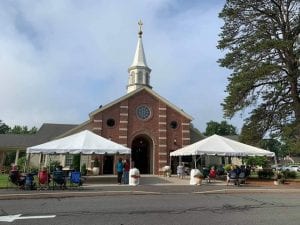
Tents were set up just outside the doors of Our Lady of the Blessed Sacrament Church during July, August and September with outdoor audio and video. (OUR LADY OF THE BLESSED SACRAMENT CHURCH PHOTO)
During July and August when the temperatures soared, Pacholec moved into the church but set up two smaller tents in front of the open doors of the church.
“We provided video of the Mass on a large screen and sound for anyone outside,” said Pacholec. “People brought their own chairs and observed proper distancing with masks. A Communion minister would come to the open doors of the church to distribute Communion there if people did not want to come inside.”
Now with the cooler weather, Pacholec said the tents have been taken down but to accommodate parishioners who are hesitant to come inside, he has added a second 8:30 a.m. Mass in the Parish Hall.
“Last weekend we had 22 people come to that Mass, some who had been outside and had not come into the church yet,” said Pacholec. “They brought their own chairs and appreciated the large open space in the hall for distancing. If we need to add a second 4 p.m. or 11 a.m. Mass in the weeks to come, we will.”
At St. Mary’s, Salatino said weekday Masses at 8:30 a.m. resumed in May, and weekend Masses began May 23-24.
“We measured out how people could sit six feet apart, marked pews with white ribbons taped x’s telling people where to sit,” said Salatino. “Parishioners are met at the doors by greeters who direct them where to sit with areas designated for families, couples and singles.”
Holy Communion is received by parishioners kneeling or sitting in the pews, noted Salatino.
“Communion can only be received in the hand,” said Salatino. “The priest, deacon or Eucharistic minister go pew to pew and masks must be worn at all times with gloves recommended.”
Salatino added that during the past few weeks he has seen more than 500 in attendance at Masses.
“Pre-COVID-19 attendance fluctuated between 900 and 1,100,” said Salatino.
Parent said when Masses first resumed, attendance was 50% of last year’s average.
“Holy Trinity Mass attendance is good,” said Parent, adding, “now we are at two-thirds.”
While Soltysiak reports that attendance is “somewhat down” currently, Wallis is seeing a 40% decline in those attending Mass.
“People are starting to slowly come back and many are staying home and watching the Chalice of Salvation on television,” said Wallis. “We are following all of the guidelines including no physical contact and we know people are missing the physical aspect very much.”
Despite the fact that churches are down in attendance due to ongoing COVID-19 protocols, all of the priests note that finances are in good shape.
“In the first few months of the pandemic the collection was very small,” said Salatino. “In May, people brought their envelopes to church and if they did not come in person they sent their contributions in the mail or gave online. Our weekly collections have just about gone back to normal. Our parishioners are very generous and loyal, they really love St. Mary’s.”
Pacholec agreed about finances at Our Lady of the Blessed Sacrament.
“I have to say people have been generous and kind to keep up their support of the parish even if they are not physically back yet,” said Pacholec. “They mail in their donations, drop them off at the parish office, or use online or electronic banking. We have not reached full support, but we are holding our own, thanks to the faithfulness of our people.”
Parent added that “Holy Trinity is financially stable thanks to our wonderful, devoted parishioners who have continued to financially support it by sending in their donations when unable to attend in person.”
Religious classes are also back in full swing at all of the churches with contingency plans to go online if necessary.
“We have 300 students attending religious education classes,” said Salatino, adding, “pre-COVID-19 it was over 500.”
Pacholec noted Blessed Sacrament will be offering both in-person and virtual religious education classes for children.
Parent said at Holy Trinity, religious education classes have resumed and are “still a work in progress.”
“Attendance is about two-thirds from last year and some teachers have not returned,” said Parent, adding, “We are still accepting registrations.”
Both Wallis and Soltysiak said they too are opening up religious education classes at their churches.
Now as the holiday season fast approaches, church leaders are once again brainstorming ideas with parish officers to find ways to ensure everyone who seeks to attend a Mass will find a setting that is comfortable for them.
“Given the limitations on occupancy in the church, and assuming that will continue in the months ahead, we are already planning to try to accommodate the approximately 1,000 people who come to Mass on Christmas Eve,” said Pacholec. “We are looking at adding a second 4 p.m. Christmas Eve Mass in the hall, and at least two to three other Masses on Christmas Eve, including a Midnight Mass – all to spread out the crowds and make it desirable, safe and comfortable to come to Mass for Christmas.”
Pacholec added that choir members have been meeting weekly on the Zoom virtual platform and are already working on Christmas music.
“We will use screens at Christmas, along with single cantors from the choir doing featured pieces like ‘O Holy Night’,” said Pacholec. “We are trying to prepare for the worst case scenario.”
While church leaders continue to communicate to parishioners through a variety of social media platforms including Facebook postings, weekly bulletins online, emails, and Masses uploaded for live streaming, there is no replacing the human touch of greeting one’s flock week after week.
“Another challenging aspect of having restricted attendance in church is not being able to have social, community building gatherings such as parish dinners and the monthly Sunday breakfasts,” said Parent.
Wallis agreed.
“I’m just waiting for the time to welcome more parishioners back to church,” said Wallis.
As for Soltysiak, he said he is eager to start working with the church celebration committee soon “to mark St. Joseph’s 101st anniversary next year.”

